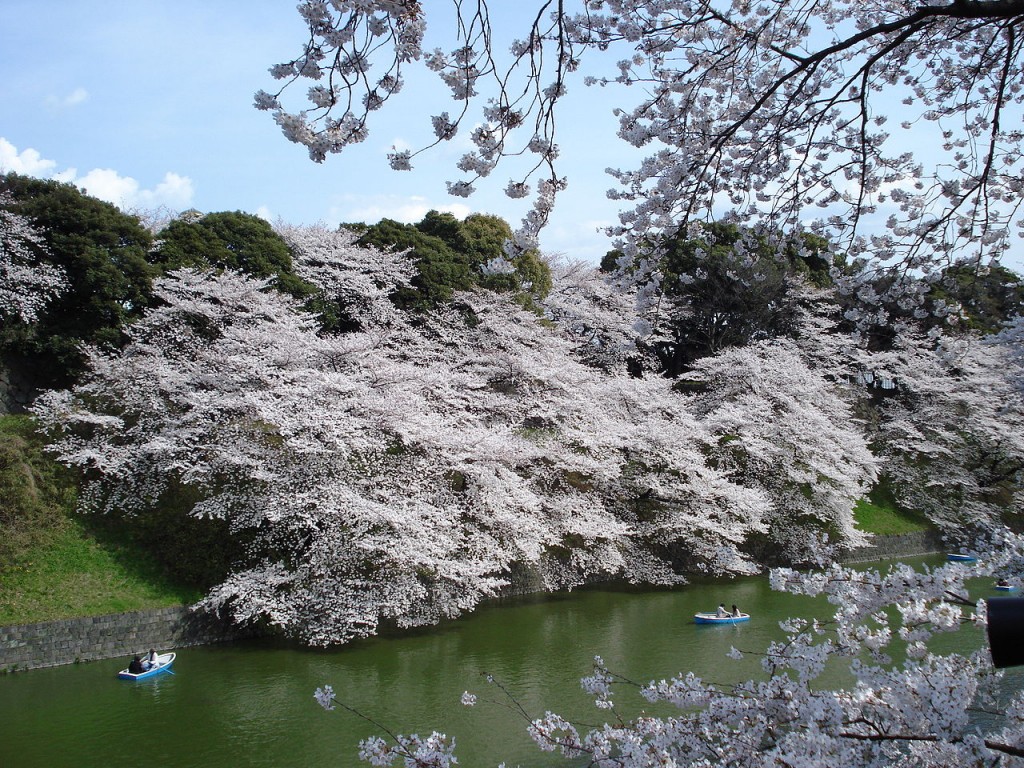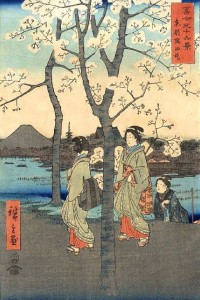
Cherry blossoms at the Japanese Imperial Palace moat in Tokyo (photo Public Domain from Wikimedia Commons)
When I was a kid in Japan, my family would make the requisite trek out every spring to see the cherry trees, or sakura, blooming at places like the Imperial Palace (above) or Ueno Park, which is better known the rest of the year for a bustling train station and crowded market with smelly fish vendors. Sakura-viewing is such a historically significant cultural event in Japan that it has its own name: Hanami, or “flower-viewing.”
People — individuals, couples in love, entire families — stroll parks and avenues for Hanami and marvel at the fleeting beauty of the cherry blossoms, which bloom and then fall too soon as everyone picnics beneath the lovely pink cascade.

From the woodblock master Hiroshige's series, "36 Views of Mount Fuji" (Public domain)
The country feels so strongly about its precious sakura, that in 1912 Japan made a gift of friendship of 3,000 cherry trees to the United States. They were planted in Washington D.C., around the Tidal Basin (near the Jefferson Memorial), East Potomac Park and around the Washington Monument.
Those trees have become a springtime ritual for Americans as well, a popular seasonal tourist attraction. There’s a National Cherry Blossom Festival in Washington that runs from March 20-April 27 this year, with events throughout the month, as well as lots of “hanami,” except we call it “bloom watching.”
When my family moved Stateside in the 1960s and lived in northern Virginia, we would visit D.C. every spring to enjoy the sakura there.
Continue reading →













